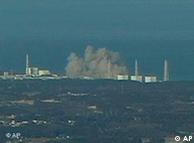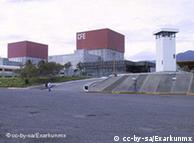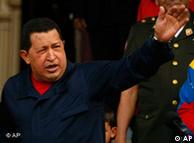As the nuclear crisis intensifies in Japan, thoughts have turned
to the atomic power industries in other countries and to questions of
safety. There are 439 nuclear reactors the world over, six of which can
be found in Latin America.
Argentina was the forerunner in this regard and currently has two plants in operation. A third is under construction.
The first of the country's plants to open was Atucha I on the shores
of River Parana de las Palmas some 100 kilometers (62 miles) from the
capital, Buenos Aires. Construction was completed in 1974. Work on
Atucha II is still ongoing and is expected to be completed this year
after a 20-year standstill.
 Japan's nuclear problems focus on the Fukushima Daiichi power plant
Japan's nuclear problems focus on the Fukushima Daiichi power plant
The Embalse power plant, located near the city of the same name in
Cordoba province, was the country's second nuclear facility and is South
America largest thermal nuclear plant.
The three plants are administered by Nucleoelectrica Argentina S.A.
and deliver 6.2 percent of the country's power. This proportion is
likely to grow in coming years following an announcement in December
that US company Westinghouse would build Argentina's fourth nuclear
power station, Atucha III.
'Brazil must pause to think'
In South America's largest country, Brazil, some 3.1 percent of
energy demand is met with nuclear power. Brazil has two stations in
operation, while construction on a third has just been completed.
The Almirante Alvaro Alberto plant, otherwise known as Angra, is
located by the beach at Itaorna in Angra dos Reis in the state of Rio de
Janeiro.
 The Laguna Verde facility is Mexico's only nuclear plant
The Laguna Verde facility is Mexico's only nuclear plant
Angra I began generating energy in 1982, followed by Angra II in
2000. In June 2010, construction began on Angra III. The government in
Brasilia has four more plants in the planning. However, Jose Arney,
president of the Brazilian congress, said recently that in light of the
disaster in Japan "the view on nuclear energy must be seriously
reconsidered … we must pause to think."
Anti-nuclear Mexicans speak of big risk
Laguna Verde in Punta Limon, Veracruz, hosts Mexico's sole nuclear
plant, delivering 4 percent of the electricity needs of the country of
around 110 million. The station has two generators, which were installed
in 1989 and 1995 respectively.
The plant is located on the Gulf of Mexico around 70 kilometers from
Veracruz - a city of around half a million people - and has been the
subject of intense protests by anti-nuclear activists.
The environmentalist group Madres Veracruzanas - the Mothers of
Veracruz - argues that Laguna Verde has the same characteristics and
cooling system as the damaged plant in Japan. "This would mean that a
similar natural disaster could cause an identical catastrophe in
Mexico," they have said.
 Chavez has contracted Russia to build his country's first plant
Chavez has contracted Russia to build his country's first plant
Nuclear plans in Latin America
Though no other South American nations have nuclear power plants, several have them on the agenda.
On Friday, US President Barack Obama will visit Chile to discuss
nuclear plans. However, as Chileans witness the emerging disaster in
Japan and take into account the history of seismic activity in their own
country, many are increasingly skeptical of nuclear power.
Chile has two small test reactors, located in La Reina and Lo
Aquirre, which are used exclusively for research and medical purposes.
Venezuela, meanwhile, signed a deal with Russia in October for the
construction of a nuclear power station but has since decided against
pursuing nuclear power for now due to the crisis in Japan. President
Hugo Chavez had been promoting nuclear power as a clean energy
alternative.
Author: Valeria Risi, Lea Ferno / dfm
Editor: Nancy Isenson









